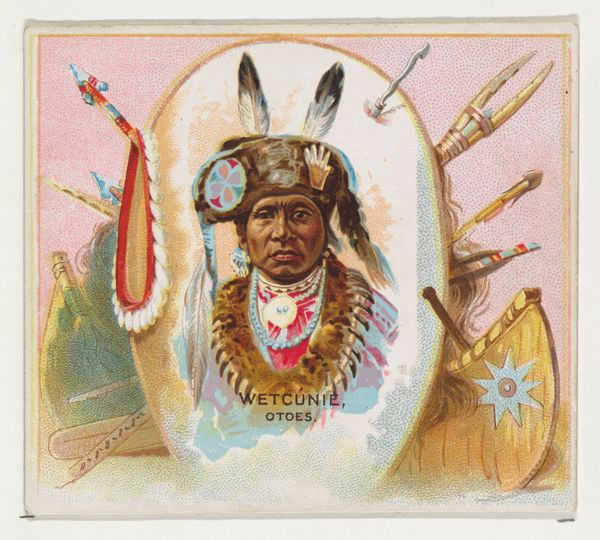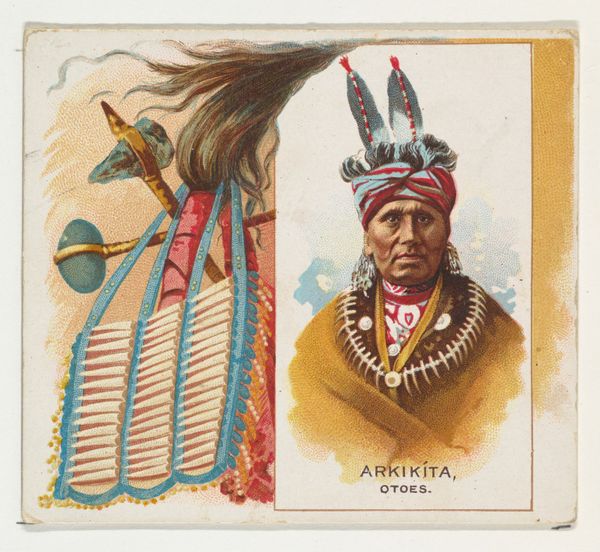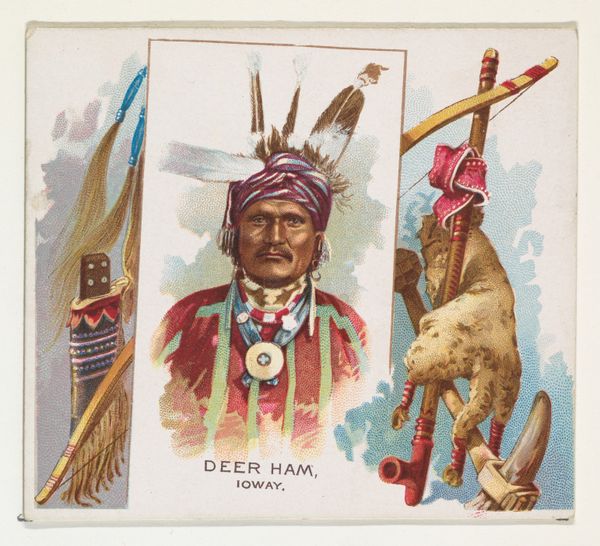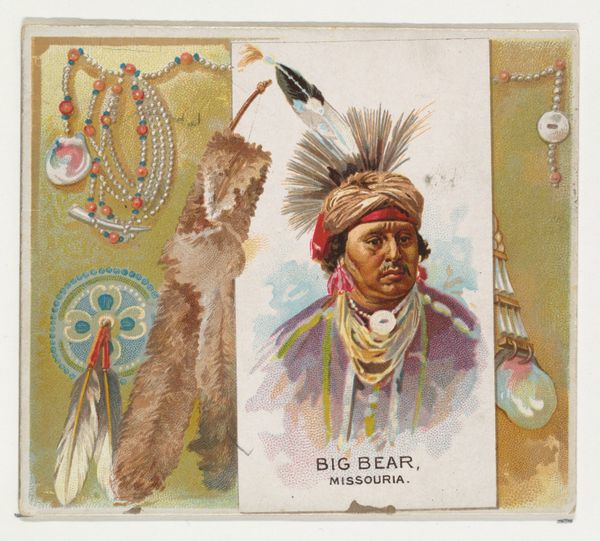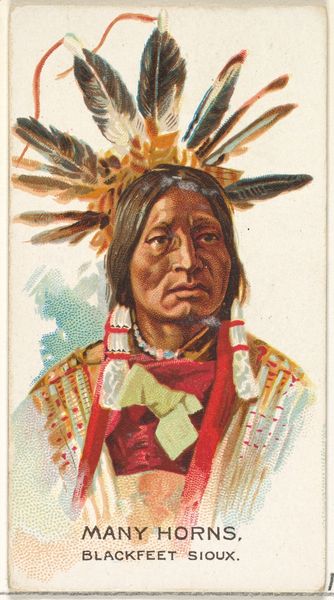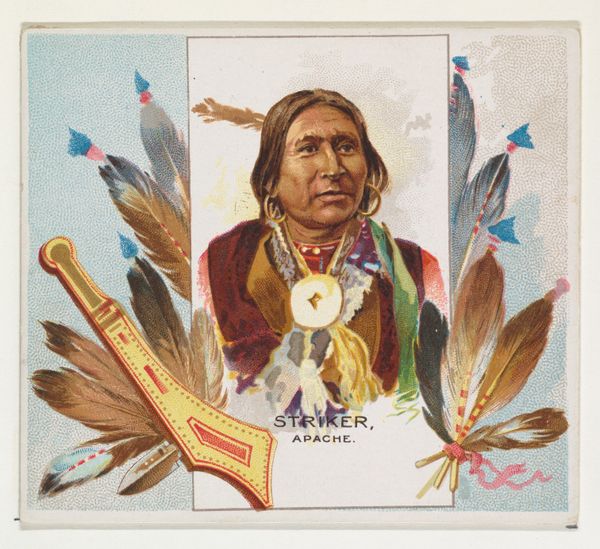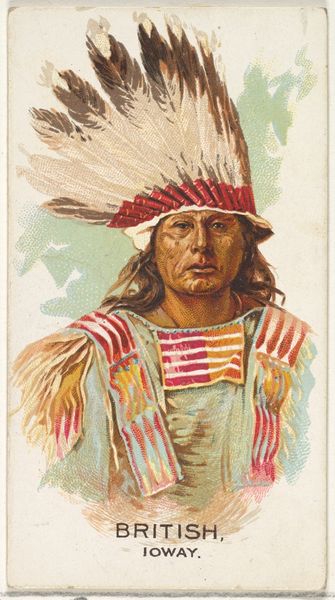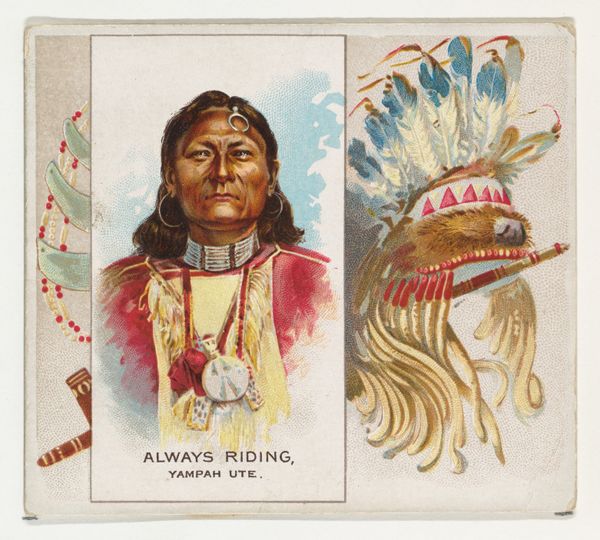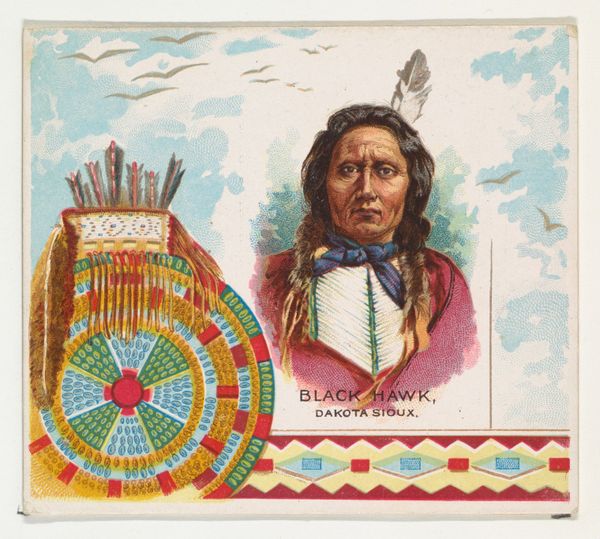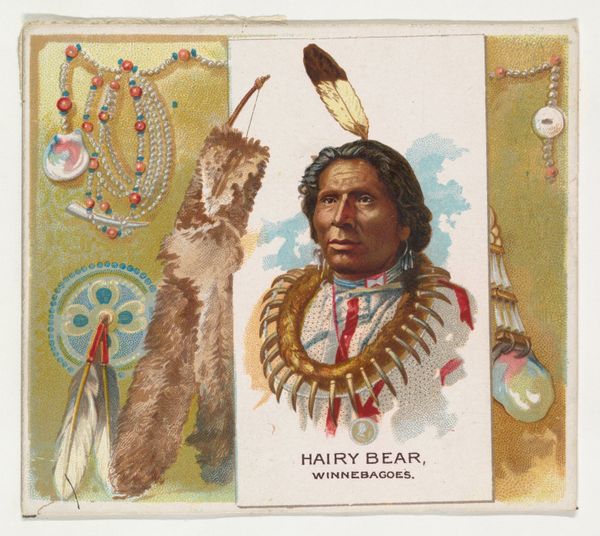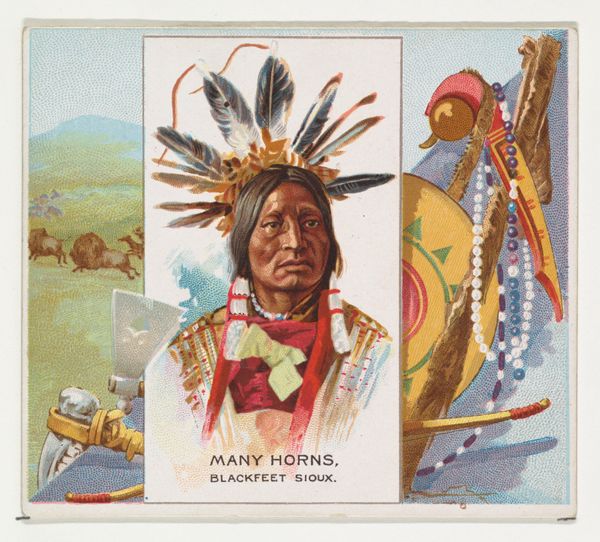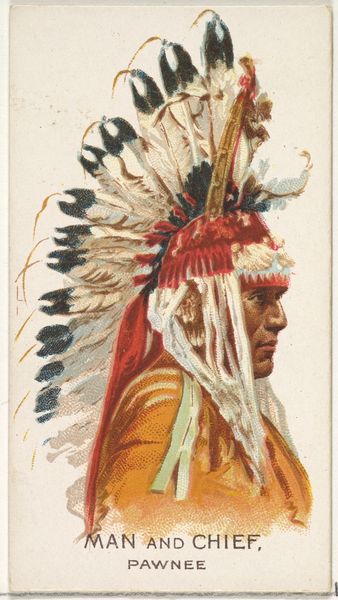
Clam Fish, Warm Springs, from the American Indian Chiefs series (N36) for Allen & Ginter Cigarettes 1888
0:00
0:00
drawing, coloured-pencil, print
#
portrait
#
drawing
#
coloured-pencil
# print
#
caricature
#
figuration
#
coloured pencil
#
naive art
#
men
#
genre-painting
#
portrait art
Dimensions: Sheet: 2 7/8 x 3 1/4 in. (7.3 x 8.3 cm)
Copyright: Public Domain
Curator: Looking at this chromolithograph, titled "Clam Fish, Warm Springs," reminds me of the complicated nature of representation. Produced around 1888 by Allen & Ginter as part of a series of American Indian Chiefs for cigarette cards, it now resides at the Metropolitan Museum of Art. What are your first impressions? Editor: Immediately, I'm struck by the stylization, the almost dreamlike quality despite its intention as a portrait. The oval composition feels like a cameo, turning Clam Fish into a symbolic figure. I wonder, what was the aim behind such a rendering? Curator: Precisely! The intention was less about realism and more about crafting a collectible image, perpetuating a romanticized—and frankly, inaccurate—vision of Indigenous peoples for the consumption of the late 19th-century consumer. Think of these cards as little ambassadors of propaganda, fueling stereotypes even as they feign respect. Editor: The symbolism here is dense, almost overwhelming. We have the feathered headdress, the weaponry—bow and arrows, even a shield. These aren’t mere accessories; they’re loaded signifiers intended to communicate power and, perhaps, the exotic ‘other’. But what does Clam Fish, the person, mean in all of this? Curator: I think, his actual identity is swallowed by the visual noise. The lithograph flattens a person into an emblem, a specimen almost. I find the contrast between the sensitive features of Clam Fish and the exaggerated ornamentation quite jarring, a constant tug-of-war. There is something about the overall color and soft detail that it is really romantic. Editor: Agreed, the visual vocabulary overshadows individuality, converting it to generalized cultural representation. And yet, looking closer at Clam Fish’s eyes, I perceive a strength—an endurance—that seems to subtly resist the frame created around him. Maybe it’s a sliver of the truth. Curator: Maybe! And maybe, looking at such objects today, we can find our own truths, digging between the representation and reality and thinking hard about those tricky and important spaces in-between. Editor: Yes, uncovering those buried narratives, especially in an object so small, is what gives it a huge symbolic punch, even now.
Comments
No comments
Be the first to comment and join the conversation on the ultimate creative platform.
